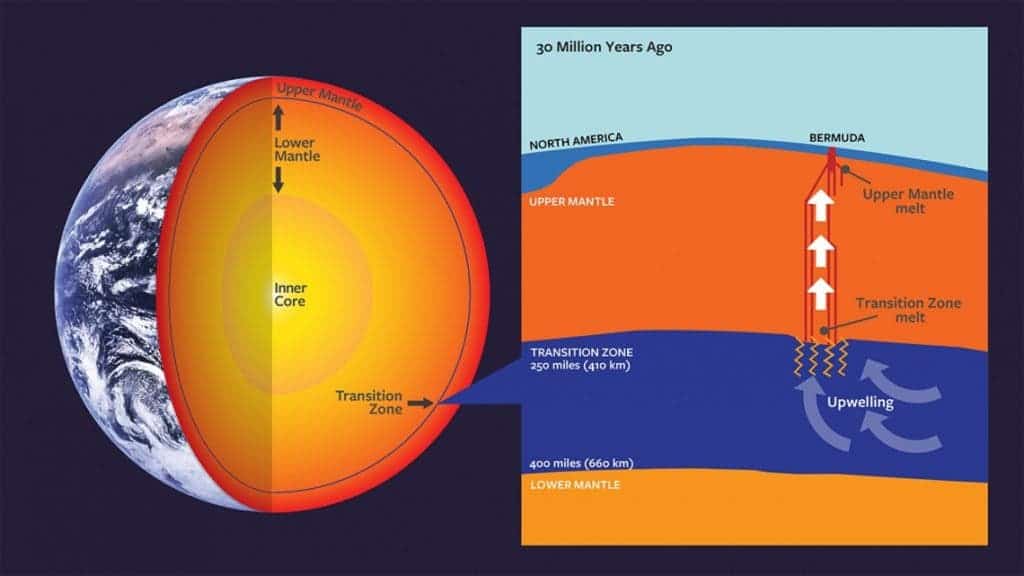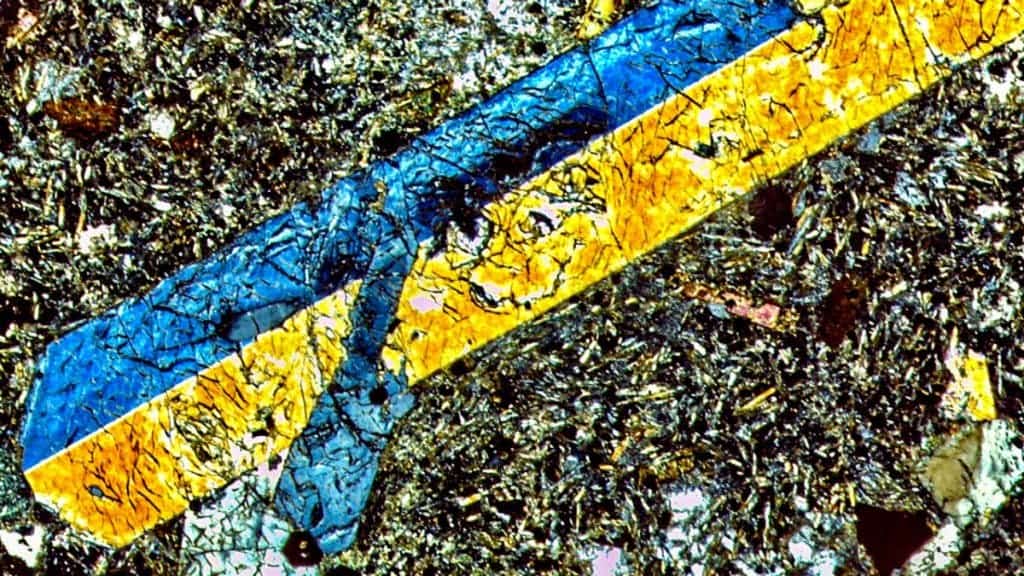Researchers studying a volcano in Bermuda report that it is unlike anything else we’ve seen on Earth — it formed through a mechanism we knew nothing about until now.

About 30 million years ago, a disturbance in the mantle’s transition zone supplied the magma to form the now-dormant volcanic foundation on which Bermuda sits. Image credits: Wendy Kenigsberg/Clive Howard.
With its turquoise seas and pink beaches, Bermuda draws almost 1 million tourists every year. But far beneath the crystalline water, something draws a completely different crowd: scientists.
Cornell researchers had a hunch that there was something off about Bermuda’s volcanoes, so they analyzed a 2,600-foot (800-meter) core sample taken back in 1972. They were looking for isotopes, trace elements, evidence of water content, volatile materials — anything that would give some indication as to how the volcanoes were formed.
“I first suspected that Bermuda’s volcanic past was special as I sampled the core and noticed the diverse textures and mineralogy preserved in the different lava flows,” Mazza said. “We quickly confirmed extreme enrichments in trace element compositions. It was exciting going over our first results … the mysteries of Bermuda started to unfold.”
When the team analyzed the materials from the core, they found a clear signature of the “transition zone” — a layer rich in water, crystals and melted rock that lies beneath the outer and inner mantle. Before now, researchers didn’t know that volcanoes can form from the transition zone.
“We found a new way to make volcanoes. This is the first time we found a clear indication from the transition zone deep in the Earth’s mantle that volcanoes can form this way,” said senior author Esteban Gazel, associate professor in the Department of Earth and Atmospheric Sciences at Cornell University.

Cross-polarized microscopic slice of a core sample. Blue-yellow mineral is augite. Credits: Gazel lab.
Volcanoes were thought to form through one of two mechanisms: either when two tectonic plates subduct (one moves beneath the other), or when there is a deep mantle upwelling, as is the case in Hawaii. Surprisingly this wasn’t the case in Bermuda.
“We were expecting our data to show the volcano was a mantle plume formation — an upwelling from the deeper mantle — just like it is in Hawaii,” Gazel said. However, 30 million years ago, a disturbance in the transition zone caused the magma to flow towards the surface of what is now Bermuda.
Although geochemical studies of this type have been carried out in most volcanic parts of the world, Bermuda had escaped trialing until now. Now that they know what to look for, researchers say that there’s a good chance they might find these chemical signatures in other volcanic areas as well.
This suggests that the transition zone, which is located at a depth of 410-660 km (250 to 400 mi), is an important chemical reservoir for the Earth, bringing material from that depth and onto the surface.
The study has been published in Nature. DOI:10.1038/s41586-019-1183-6.









